Eduard 1/48 Sopwith Camel 2F1
|
Background
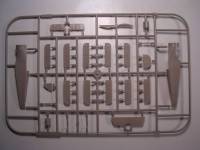 During
the latter part of the Great War, the Royal Navy recognized the virtues
of the Sopwith Camel fighter. The Camel 2F1, also known as the "Ship's
Camel" or "Split Camel" grew from a desire by the Royal
Navy to replace the Sopwith Baby seaplane and the Pup. The Camel 2F1 had
several features distinguishing it from her landlocked F1 cousin, including
a removable tail for ease of stowage aboard ship, an inflatable bladder
in the tail to aid in recovery after ditching, and a top-wing mounted
Lewis gun. The type usually carried a single Vickers as standard armament
as well. The 2F1 was powered by either the 130 hp Clerget rotary or the
150 hp Bentley B.R. I. During
the latter part of the Great War, the Royal Navy recognized the virtues
of the Sopwith Camel fighter. The Camel 2F1, also known as the "Ship's
Camel" or "Split Camel" grew from a desire by the Royal
Navy to replace the Sopwith Baby seaplane and the Pup. The Camel 2F1 had
several features distinguishing it from her landlocked F1 cousin, including
a removable tail for ease of stowage aboard ship, an inflatable bladder
in the tail to aid in recovery after ditching, and a top-wing mounted
Lewis gun. The type usually carried a single Vickers as standard armament
as well. The 2F1 was powered by either the 130 hp Clerget rotary or the
150 hp Bentley B.R. I.
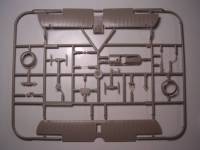 As
well as being allocated to the Royal Navy's first operational carriers,
the 2F1 Camels were launched from platforms on the turrets of battleships
and cruisers. Another interesting method of launching the aircraft while
at sea was to have them take off from a lighter (basically a boat with
a platform) while being towed behind a destroyer bounding along at upwards
of thirty knots into wind: a hair-raising prospect! As
well as being allocated to the Royal Navy's first operational carriers,
the 2F1 Camels were launched from platforms on the turrets of battleships
and cruisers. Another interesting method of launching the aircraft while
at sea was to have them take off from a lighter (basically a boat with
a platform) while being towed behind a destroyer bounding along at upwards
of thirty knots into wind: a hair-raising prospect!
Nevertheless, the type was very successful, especially against Germany's
zeppelins and seaplanes that prowled the North Sea. In 1918 2F1 Camels
were involved in the first carrier strike in history, against the Zeppelin
base at Tondern, launched from 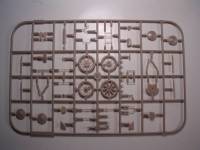 HMS
Furious. HMS
Furious.
2F1 Camels served after the Great War in Russia against the Bolsheviks
and a few were flown by Estonia and Latvia. The longest serving 2F1's
were in Canada, where they flew on until 1928 at Camp Borden, Ontario.
The Kit
The kit I received for review is a pre-production example that came
in a bag without box art, instructions, decals, or the photoetch seatbelts
that are standard with Eduard's Camel kits. What I got was three sprues
in tan colored plastic and one small clear sprue. Two of the sprues included
are common with the Camel F1 kit, as is the clear sprue. All parts appear
to be very cleanly and crisply molded, as we have come to expect from
Eduard.
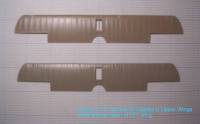 The
kit has one different sprue for the 2F1, which includes the shorter span
wings, a single Lewis gun with an Admiralty Top Plane Mounting, metal
cabane struts (one with the Rotherham pump attached), elevator external
bellcranks and best of all, the upper decking and cowling for the Bentley
engine installation. By cross-kitting with the F1, the inclusion of the
Bently cowling configuration now makes it possible to build nearly any
Camel variant. The
kit has one different sprue for the 2F1, which includes the shorter span
wings, a single Lewis gun with an Admiralty Top Plane Mounting, metal
cabane struts (one with the Rotherham pump attached), elevator external
bellcranks and best of all, the upper decking and cowling for the Bentley
engine installation. By cross-kitting with the F1, the inclusion of the
Bently cowling configuration now makes it possible to build nearly any
Camel variant.
The fuselage is the same as the F1 though, so this means the modeler
will have to scribe the characteristic joint line where the tail separates
and add the attachment hardware. One shall also have to fill in the foot-step
on the left side and move it forward. The engine itself is the same Clerget
that comes with the F1, but this will not be difficult to convert to a
Bentley for those who wish to do so, or replace with an aftermarket item.
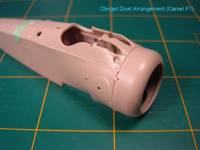 The
wing detail is similar to the F1 as regards rib tape detail. While some
have found this to be a little on the heavy side, photos of the original
show these to be quite prominent, so personally I do not have a problem
with it. A little sanding can knock them down, if desired. The
wing detail is similar to the F1 as regards rib tape detail. While some
have found this to be a little on the heavy side, photos of the original
show these to be quite prominent, so personally I do not have a problem
with it. A little sanding can knock them down, if desired.
Of notable absence as with the F1 kits are a windscreen and the pitot
tube on the outboard strut. These can easily be added from scratchbuilt
items, though. Perhaps these details and more will be included if the
kit comes out as a Profipack offering.
Conclusion
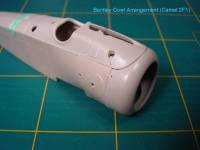 This
is an exciting addition to Eduard's stable of Camels. The 2F1 flew in
some very colorful markings. I look forward eagerly to see what decal
options Eduard will include when the kit becomes commercially available,
no doubt very soon. Meanwhile, look for a complete build of the model
in next month's Internet Modeler. This
is an exciting addition to Eduard's stable of Camels. The 2F1 flew in
some very colorful markings. I look forward eagerly to see what decal
options Eduard will include when the kit becomes commercially available,
no doubt very soon. Meanwhile, look for a complete build of the model
in next month's Internet Modeler.
My sincerest thanks to Eduard for
the review sample!
|
|